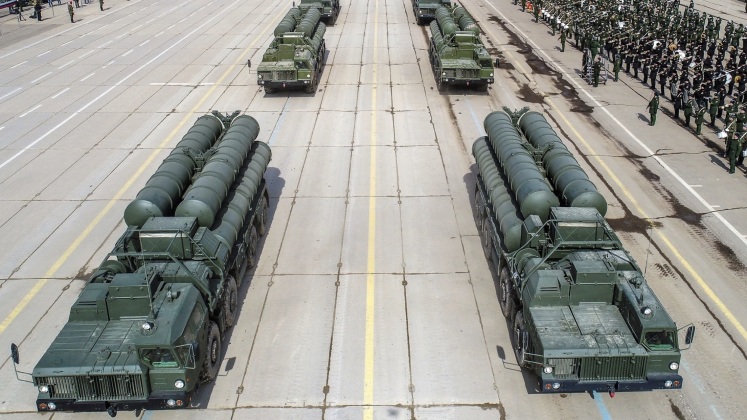News
Russia is Producing More Air Defence Missiles Than the Rest of the World Combined: Assessing Putin’s New Claim
On January 28 during a visit to the Obukhovsky Plant in St. Petersburg Russian President Vladimir Putin claimed that his country’s defence sector was producing more air defence missiles per year than the rest of the world combined. The facility plays a key role in the production of Russia’s longest ranged surface to air missile systems the S-300, S-400 and S-500, and has its origins in the 19th century when it produced a range of heavy guns for the Russian Empire. “We, for example, are making air defence missiles that you are producing three times more annually than the U.S. Our defence industry in general is annually producing air defence missiles of various purposes in approximately the same numbers as all military industrial plants of the world do. Our production is comparable with global production,” President Putin stated when addressing the plant’s workers. He added that “”the victory of Russia is inevitable and the unity of the Russian nation, heroism of fighters in the special military operation and work of the defence industry are in its basis.” Putin’s statement comes as production of missiles for air defence systems has been increased due to the ongoing Russian-Ukrainian War and heightened tensions with NATO, and just days after the country began to deliver a third batch of S-400 systems to India with two more units set to be delivered by the end of the year.

Although the Russian defence sector has contracted significantly since the disintegration of the Soviet Union, production of surface to air missile has been one of the least affected areas due to the perceived asymmetric value such assets have. While Russia’s fleets of fighters and interceptors are heavily outnumbered by those of NATO, and the country has fallen behind China and the United States in developing fifth and sixth generation fighters and a range of other aerial warfare assets, its ground based air defence systems are relatively cheap both to produce and operate and provide a means of challenging larger more modern air forces without symmetric investment in combat aviation. The S-400 system, for example, has been acquired at a consistently far higher rate than any class of combat aircraft resulting in over 20 units currently operating them, and is not only highly mobile but also capable of engaging stealth targets, almost all classes of missile, and hypersonic targets. Its operational cost is a very small fraction of that of an equivalent defensive capability provided by fighters or interceptors. The result has been very heavy Russian investment in S-400s and other complementary ground based surface to air missile systems, allowing the country to field a network widely considered second to none.

Although Russia’s defence sector has made significant achievements in the field of air defence, it remains uncertain whether Putin’s claim is correct, as while there is little doubt that Russia comfortably outproduces the combined output of NATO member states, the total production of air defence systems by North Korea and China in particular remain unknown. Both are both thought to be very substantial. Russia nevertheless retains a comfortable lead over the rest of the world in the export of its air defence systems, which first gained dominance in foreign markets in the early years of the Cold War and have since retained this position. Use of air defence systems has been limited in the Russian-Ukrainian War since it began in February due to the limited capabilities of the Ukrainian Air Force, although notable records have been set for very long ranged air to air kills using the S-400 and possibly the S-300V4 systems. The latter is in production in parallel to the S-400, and uses many of the same technologies but has significantly higher mobility and deploys from tracked launch vehicles. The latest addition to Russia’s network of long range air defence assets, the S-500 system, is expected to be strongly marketed for export once minimal domestic requirements are met, with India, Algeria and Kazakhstan considered among its leading potential clients. The system provides a longer ranged strategic level defence and is specialised in neutralising targets such as nuclear tipped missiles, hypersonic aircraft, satellites, space planes and heavy bombers, although integration with its sensors can provide valuable information to S-400s and other lower end systems for neutralising smaller targets.












